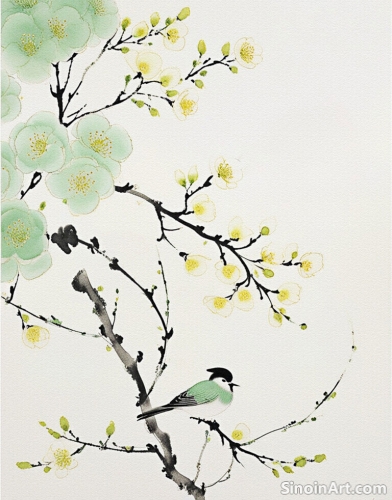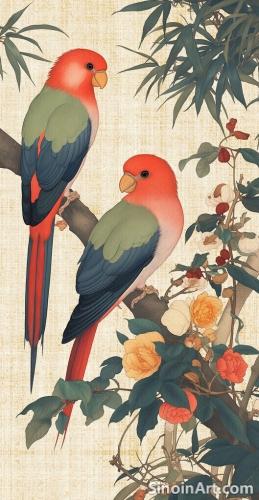Gongbi and the Use of Calligraphy in Composition
|
While Gongbi painting is a distinct art form, the incorporation of calligraphy often enhances the overall aesthetic and cultural significance of the artwork. Calligraphy adds both visual depth and layers of literary meaning to the works. The careful integration of calligraphy into the composition serves to enrich and enhance the art piece as a whole.  The calligraphic inscriptions in Gongbi paintings are often carefully placed to balance the composition, serving as a visual counterpoint to the painted areas. The addition of calligraphic elements adds both a literary and artistic dimension to the artwork. The careful placement of calligraphic elements adds balance and helps to direct the viewer's eye.  The calligraphic content of these inscriptions is also important, providing context, commentary, or poetic meaning to the painting. The verses often deepen the meaning and expand on the narrative of the painting. The use of text often adds multiple layers of meaning.  The brushwork used in the calligraphic inscriptions complements the brushwork used in the painting itself, creating a unified and harmonious visual experience. The flow of the brushstroke, the shape of the lines, and the overall balance add to the overall artistic expression. The choice of calligraphic style also reflects the artistic intention of the painter. The style of the calligraphy often corresponds with the overall tone and meaning of the painting. The use of varied calligraphic styles helps to enhance the overall emotional and artistic impact. The combination of painting and calligraphy showcases the interconnectedness of the two art forms within Chinese culture, creating works that are both visually compelling and intellectually stimulating. The inclusion of both forms elevates the work to a higher level of artistic expression. |
Tag : Gongbi calligraphy, Chinese calligraphy, art inscription, text in painting, visual literature
Related information
- The Future of Gongbi: Innovation and Tradition
- Gongbi Painting and Its Cultural Significance in China
- Gongbi and the Use of Bird Motifs: Symbolism and Beauty
- The Meticulous Hand: Precision and Detail in Gongbi Painting
- The Use of Gold Leaf and Other Embellishments in Gongbi
A look at the future of Gongbi painting, focusing on innovation, technology, and the importance of preserving traditional skills.
This article explores the cultural significance of Gongbi painting in China, highlighting its historical importance, its role in reflecting cultural values, its connection to nature, its emphasis on discipline, and its continued relevance in modern Chinese society.
The depiction of birds is a prominent theme in Chinese Gongbi painting, often serving as a means to explore the beauty, freedom, and symbolic richness of the natural world. Artists often render a diverse array of birds, from majestic eagles and phoenixes to the more humble songbirds, imbuing them with specific cultural meanings and stylistic characteristics. The birds add a vibrant and often symbolic element to these pieces.
Chinese Gongbi painting, distinguished by its meticulous detail and precise execution, stands as a testament to the dedication and technical skill of its practitioners. Unlike the expressive spontaneity of Xieyi (freehand) painting, Gongbi emphasizes a controlled and highly detailed approach, striving for a realistic depiction of the subject matter. This pursuit of perfection is central to the aesthetic and philosophy of the Gongbi tradition.
This article explores the use of gold leaf and other embellishments in Gongbi painting, detailing their application, symbolic significance, and contribution to the visual richness and overall aesthetic of the artwork.